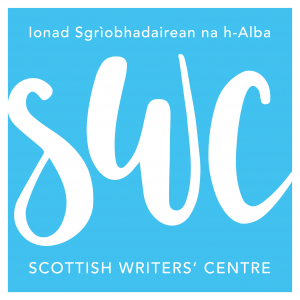
For many of us, the idea of summer is synonymous with water: refreshing swims in the sea, poolside lounging, exploring Scotland’s many beautiful lochs and rivers. So what better time to revisit water as a source of poetic inspiration? Tonight’s event looks set to be a riveting exploration of the creative link between water and poetry, and we’d love to see as many of you there as possible! Wondering what it’s all about? SWC’s Literary Editor Rachel Walker talked to fantastic featured poets Morelle Smith and George Colkitto about the lure of the natural world.
Have natural landscapes always been important to you when writing poetry?
Morelle: Well, quite simply, yes. Natural landscapes feature in a lot of my poetry. I get so much inspiration from nature in general and I have a particular fondness for trees, water, skyscapes, night skies…
George: I find that the trigger for a poem comes from many things: a memory, a phrase which pops into my head, an overheard remark. Landscape is one of the triggers. Scotland is a place of marvellous scenery. Who could fail to be inspired by the view from above Port Glasgow of the Firth of Clyde, or Arran from Seamill? In Orkney there is the endless arc of sky into sea and back to the land. So many places spring to mind as I write this and that is how a poem begins – the desire to hold thought on the page. So, the answer to your question has to be yes: it is important and always has been.
Do you have a favourite poet or poem?
Morelle: I have many favourite poems and poets, so it is hard to choose just one. Among my favourite poets are Rumi, Rainer Maria Rilke, William Stafford, Mary Oliver. All of these poets share a mystical approach to life and very much connect with the natural world.
George: I remember poems badly. What I do have are snippets of lines that play in my head. As a child, my main inspiration was the ‘soliloquy’ from Hamlet. I do like Frost, Blake, Douglas Dunn, and the Daffodils poem by Wordsworth.
How did you first come to see water as inspiration for poetry?
Morelle: Part of water’s very special properties are to do with movement and flow, (particularly in rivers and oceans) and I feel that this sense of movement links with our own human lives which are also ever-changing. The way that water moves reflects the sense of journey that life encompasses, and also encourages the flow of associations of images. Of course, water literally reflects images and light in some cases; the sea, depending on the weather, can be so many different colours. The rhythm of the sea in particular seems to connect with our own rhythms, heartbeats.
Do you find a particular body of water inspires you more than any other?
Morelle: I’m always drawn to the sea – particularly the Mediterranean, where I feel most at home. Shorelines – the edges of sea and land – have that liminal quality of two different elements meeting and merging, and the physical quality of overlapping and blurring (even erosion of identity) helps to blur boundaries in the mind. I feel that this is particularly fertile ground for poetry. Also, my local river – the River Tweed – is one that I often find myself walking beside, following its meandering course.
George, can you tell us more about your connection with Castle Semple Loch, and why you decided to focus your collection on that one area?
George: Some years back I became a member of Lochwinnoch Writers, and the drive from my home to Lochwinnoch gives views of Castle Semple Loch. I would go for walks by the loch with my two cairn terriers and I also attended a poetry workshop based at RSPB Centre at the Loch.
In 2015 I was at a poetry week in Wales and talk turned to writing projects. I had a number of ideas I was working on but nothing concrete. While in Wales I was writing about the landscape and it occurred to me that I should refocus on my own home environment. As I travelled every week to Lochwinnoch it was inevitable that I began to write about Castle Semple Loch. I decided to visit the same spot for a year, capture what I saw in poem and see what was the result.
What did you learn from observing the Loch over a year? Did the collection end up being what you were initially expecting it to be?
Interesting question as I am unsure if I had any expectations when I started. I write a lot about many subjects so the attraction was to focus on one location and to keep going back to it and to see if there was anything new to say. I found it addictive. The Loch was a great subject as I could go at different times of day and night; it has such a range of activities, it is frequented by so many people, and it is a beautiful place. One poem in the collection highlights what I discovered. The opening line of ‘Warlock Tower’ is ‘a nothing day bursts to life’. There are no ‘nothing days’ at Castle Semple Loch.
Do you have any advice for aspiring poets?
Morelle: If you’re drawn to nature, spend as much time in it – during all the seasons – as you can. I find walking particularly helpful. If a phrase or a line comes to mind, write it down straight away (always have a notebook on you for that reason!) Put poems aside for a while, then go back and work on them later. Read as much as you can.
George: Write as often as you can. Read what you write out loud as it helps you to find if the poem works and where it needs edited. Listen to criticism, but only make changes which you believe make your poem better. Go to hear other poets read. Read widely. If you can afford the time and cost, go to courses; you will learn and will make friends.



